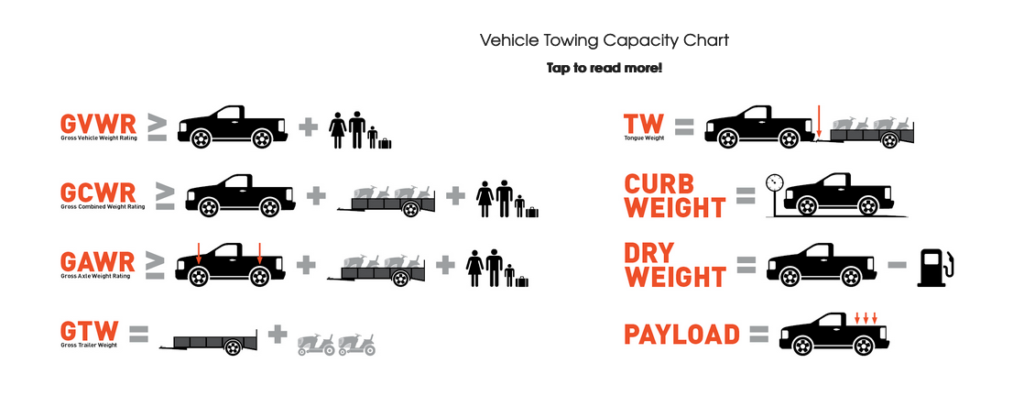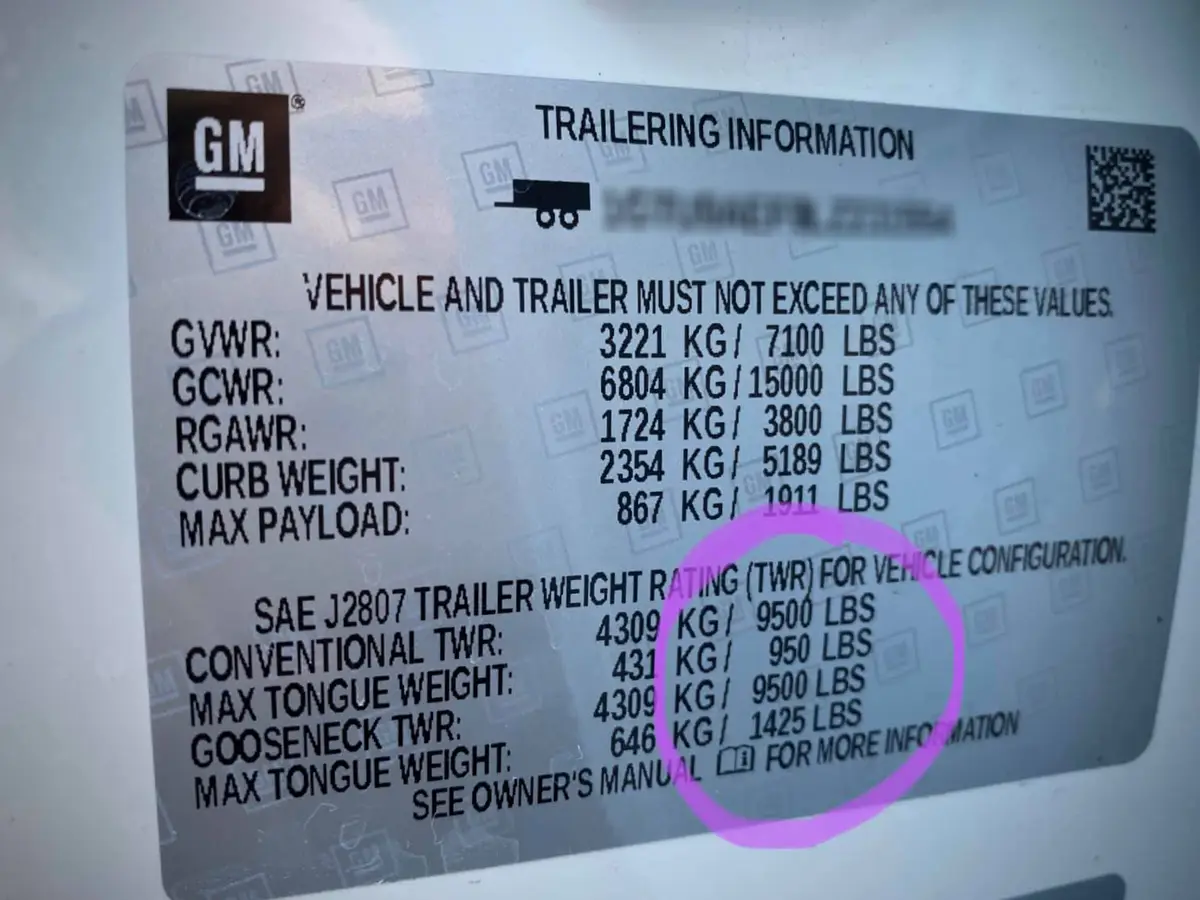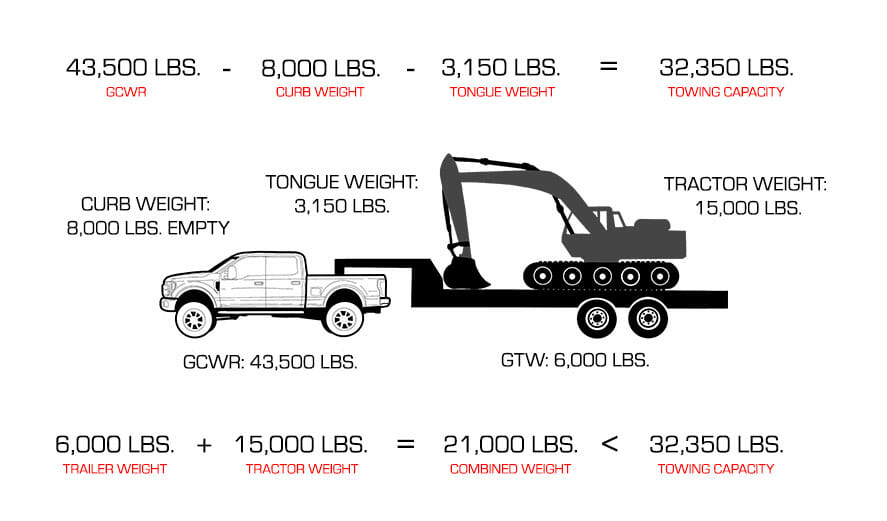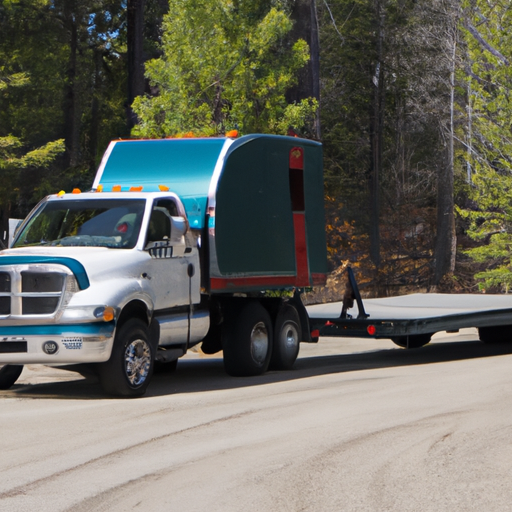In the world of automobiles, towing capacity is a crucial aspect that determines a vehicle’s capability to pull heavy loads. But have you ever wondered how exactly towing capacity is determined? In this article, we will explore the rating system used to measure towing capacity and delve into the factors that influence these ratings. By gaining a deeper understanding of how towing capacity is evaluated, you will be better equipped to make informed decisions when selecting a vehicle for your towing needs.
Understanding Towing Capacity
What is towing capacity?
Towing capacity refers to the maximum weight that a vehicle can safely tow without causing damage to the vehicle or compromising its performance. It is an important specification that every vehicle owner should be aware of, especially if they frequently need to tow trailers, boats, or other heavy loads.
Why is towing capacity important?
Knowing the towing capacity of your vehicle is crucial for several reasons. First and foremost, exceeding the towing capacity can put undue stress on the engine, transmission, and other critical components of your vehicle. This can lead to mechanical failures and costly repairs. Additionally, ignoring the towing capacity can have serious safety implications, as the vehicle may struggle to accelerate, brake, or maneuver properly when towing a load that is too heavy. Understanding the towing capacity helps ensure both the longevity of your vehicle and the safety of yourself and others on the road.
Factors affecting towing capacity
Several factors influence the towing capacity of a vehicle. These include the gross vehicle weight rating (GVWR), gross combined weight rating (GCWR), tongue weight, payload capacity, and the presence of additional towing packages or upgrades. It is important to understand these factors in order to accurately determine the towing capacity of a vehicle.
Rating Standards and Terminology
Gross Vehicle Weight Rating (GVWR)
The gross vehicle weight rating (GVWR) is the maximum weight that a vehicle can safely carry, including its own weight and the weight of its occupants, cargo, and any additional attachments. This rating is determined by the manufacturer and is an important consideration when evaluating a vehicle’s towing capacity.
Gross Combined Weight Rating (GCWR)
The gross combined weight rating (GCWR) refers to the maximum weight of both the vehicle and the trailer or load it is towing. It takes into account the towing capacity of the vehicle as well as other factors such as the powertrain and cooling system. The GCWR helps ensure that the vehicle is capable of safely towing a particular load.
Tongue Weight
Tongue weight is the downward force exerted on the hitch ball by the trailer. It is an important factor to consider when determining a vehicle’s towing capacity because excessive tongue weight can overload the rear suspension and cause handling issues. Understanding the recommended tongue weight range for your vehicle is essential for safe towing.
Payload Capacity
Payload capacity refers to the maximum weight that a vehicle’s cargo area, including the occupants and any additional cargo, can safely carry. It is closely related to towing capacity because when towing, a portion of the load’s weight is transferred to the towing vehicle. Understanding the payload capacity is important to ensure that the vehicle can handle the additional weight without exceeding its limits.
Classifying Vehicles by Towing Capacity
Vehicles are often classified into different categories based on their towing capacity. These categories typically include classes such as light-duty, medium-duty, and heavy-duty. The towing capacity within each class can vary significantly. When selecting a vehicle for towing purposes, it is essential to consider the class that best suits your needs.
Towing Package and Upgrades
Some vehicles come with optional towing packages or upgrades that enhance their towing capabilities. These packages may include features such as upgraded suspension, towing-specific cooling systems, reinforced frames, and improved braking systems. Investing in a vehicle with a towing package or considering aftermarket upgrades can significantly increase the towing capacity and overall towing performance.

This image is property of primeauxrv.com.
Industry Standards and Certifications
Society of Automotive Engineers (SAE)
The Society of Automotive Engineers (SAE) is an internationally recognized organization that develops technical standards for various aspects of automotive design and performance. SAE standards pertaining to towing capacity help establish consistent guidelines and testing procedures within the industry, ensuring that vehicles and their towing capabilities meet certain safety and performance criteria.
Gross Vehicle Weight Rating (GVWR) Standard
The GVWR standard is a regulatory requirement that sets forth the minimum weight rating that all vehicles must adhere to. This standard helps establish a baseline for manufacturers to determine the maximum weight that a vehicle can carry, including both its own weight and any additional loads. The GVWR standard plays a crucial role in determining a vehicle’s towing capacity.
J2807 Towing Standards
The J2807 towing standards are a set of towing capacity guidelines developed by the Society of Automotive Engineers (SAE). These standards provide a comprehensive framework for testing and rating the towing capabilities of vehicles. They include various performance criteria, such as acceleration, handling, and temperature limits, which must be met to achieve a specific towing capacity rating. The J2807 standards help ensure that towing capacities are accurately rated and consistent across different vehicle manufacturers.
Towing Capacity Testing Procedure
Standard procedures
Towing capacity testing follows specific procedures to ensure accuracy and reliability. These procedures involve subjecting the vehicle to various controlled conditions under which it can demonstrate its maximum towing capabilities. Testing typically takes place in specialized facilities and involves the use of standardized equipment to measure key performance metrics.
Determining towing capacity
During the testing process, the towing capacity of a vehicle is determined by measuring its ability to accelerate, brake, handle corners, and maintain stability while towing a load. These tests assess factors such as engine power, transmission and gear ratios, axle ratios, suspension setup, braking systems, and tire specifications, all of which contribute to the vehicle’s towing capacity.
Conditions for testing
Towing capacity testing is carried out under controlled conditions to simulate real-world scenarios. This includes factors such as different weather conditions, road surfaces, and gradients. By subjecting the vehicle to a range of conditions, manufacturers can gain a comprehensive understanding of its towing capabilities and establish accurate and reliable ratings.
Calculating safe towing limits
The towing capacity rating determined during the testing procedure represents the maximum weight a vehicle can safely tow under ideal conditions. However, it is important to note that safe towing limits can vary depending on additional factors such as driver experience, load distribution, and road conditions. It is crucial for individuals to calculate their own safe towing limits by taking into account various parameters and exercising caution while towing.

This image is property of tap.fremontmotors.com.
Dynamic Factors in Towing Capacity
Engine power and torque
The engine power and torque play a significant role in a vehicle’s towing capacity. Engines with higher power outputs generally have greater towing capabilities, as they can provide the necessary force to pull heavy loads. Torque, on the other hand, determines a vehicle’s ability to start and maintain momentum while towing uphill or on uneven terrain.
Transmission and gear ratios
The transmission and gear ratios impact a vehicle’s towing capacity by influencing its ability to transfer power from the engine to the wheels. Vehicles equipped with transmissions that have a wide gear range, including lower gears designed for towing, are better suited for towing heavy loads. Additionally, vehicles with multi-speed transmissions often offer greater flexibility and improved towing performance.
Axle ratios and differential
Axle ratios and differentials affect a vehicle’s towing capacity by determining the torque multiplication and distribution between the wheels. Vehicles with numerically higher axle ratios typically have greater towing capacities, as they provide more force to the wheels. Differential systems that are designed for towing, such as limited-slip or locking differentials, can also enhance a vehicle’s towing capabilities by improving traction and stability.
Suspension setup
The suspension setup of a vehicle plays a vital role in maintaining stability and controlling the load while towing. Vehicles with heavy-duty suspension systems, including upgraded springs, shocks, and sway bars, are better equipped to handle the additional weight and maintain a level ride height. Proper suspension setup ensures that the towing vehicle remains balanced and reduces the risk of instability.
Braking systems
A vehicle’s braking system is essential for safely towing heavy loads. The braking system must be capable of providing sufficient stopping power to prevent the towing vehicle and the trailer from exceeding safe speeds or experiencing brake fade. Upgraded braking systems, including larger brake rotors and calipers, improve the vehicle’s ability to handle the increased load and ensure efficient braking while towing.
Tire specifications
Tire specifications, such as load rating and size, have a direct impact on a vehicle’s towing capacity. Tires that are designed to handle heavier loads, with an appropriate load rating, offer better support and stability while towing. It is crucial to ensure that the tires on both the towing vehicle and the trailer are properly inflated and in good condition to mitigate the risk of blowouts or loss of control.
Towing Capacity Limits and Safety
Understanding weight distribution
Proper weight distribution is critical for safe towing. The load should be evenly distributed between the towing vehicle and the trailer, ideally with a slightly heavier tongue weight to ensure stability and control. Improper weight distribution, such as having too much weight on the trailer or an unbalanced load, can lead to sway, reduced steering control, and potential accidents. Understanding and implementing proper weight distribution techniques significantly enhance towing safety.
Effects on vehicle handling
Exceeding the towing capacity of a vehicle can negatively impact its handling characteristics. An overloaded vehicle may experience reduced acceleration, compromised braking performance, and increased body roll when turning. These effects can significantly impair the driver’s ability to control the vehicle and increase the risk of accidents. Operating within the recommended towing capacity ensures that the vehicle maintains its stability and handling capabilities while towing.
Safety considerations
Towing heavy loads presents various safety considerations that must be addressed. Adequate mirrors should be installed or adjusted to provide clear visibility of the trailer and surrounding traffic. Additionally, ensuring that the trailer is properly secured to the towing vehicle with safety chains, verifying that the trailer lights are functioning correctly, and using extended side mirrors if needed are all crucial safety precautions when towing. Adhering to these safety measures reduces the risk of accidents and enhances the overall towing experience.
Operating within limits
Operating a vehicle within its towing capacity limits is not only important for safety but also for adhering to legal requirements. Many jurisdictions have specific laws and regulations governing towing capacity and load limits. Violating these regulations can result in fines, penalties, or even impoundment of the vehicle. It is essential to understand and follow the towing capacity limits set by both the manufacturer and local authorities to stay compliant with the law.
Overloading risks
Overloading a vehicle beyond its towing capacity poses serious risks to both the vehicle and its occupants. Excessive weight can cause damage to the suspension, tires, brakes, and other critical components, leading to accelerated wear and potential failures. It may also result in decreased fuel efficiency and increased fuel consumption. Additionally, overloading a vehicle can strain the engine and transmission, potentially causing severe damage and costly repairs. Avoiding overloading is crucial for maintaining the longevity and performance of the vehicle.

This image is property of www.weigh-safe.com.
Towing Capacity vs. Recommended Limit
Manufacturer’s recommended limits
Manufacturers provide specific towing capacity ratings for their vehicles based on rigorous testing and engineering analysis. These ratings reflect the maximum weight that the vehicle can safely and reliably tow. It is essential to abide by these recommended limits to ensure that the vehicle performs optimally and avoids any potential mechanical or safety issues. Ignoring the manufacturer’s recommended limits can compromise the integrity of the vehicle and put both the driver and others at risk.
Aftermarket modifications
Aftermarket modifications that claim to enhance a vehicle’s towing capacity should be approached with caution. While certain modifications, such as upgraded hitches or suspension components, can improve a vehicle’s towing capabilities, it is crucial to consult with professionals or refer to manufacturer guidelines before making any aftermarket adjustments. Modifying a vehicle without proper expertise or knowledge can have adverse effects on its performance and safety.
Insurance considerations
It is essential to review your insurance policy and communicate any modifications or changes made to your vehicle regarding its towing capacity. Some insurance policies may have specific requirements or limitations regarding towing, and failure to disclose this information could invalidate your coverage in the event of an accident. Understanding your insurance coverage and ensuring that it aligns with your towing needs is important for protecting both your vehicle and yourself financially.
Towing Capacity Variations by Vehicle Type
Cars, SUVs, and crossovers
Cars, SUVs, and crossovers generally have lower towing capacities compared to larger vehicles such as pickup trucks and vans. While they may be capable of towing smaller trailers or lightweight loads, it is crucial to carefully review the manufacturer’s specifications to determine the exact towing capacity. Towing with these vehicles often requires special attention to weight distribution and may necessitate the use of additional towing equipment or accessories to ensure safe and efficient towing.
Pickup trucks
Pickup trucks are known for their towing capabilities, offering a wide range of towing capacities depending on their size, powertrain, and optional towing packages. Full-size pickup trucks typically have higher towing capacities, with heavy-duty models often capable of towing large trailers and significant loads. Still, it is important to consider the specific model, engine, and other factors when determining the towing capacity of a pickup truck.
Vans and commercial vehicles
Vans and commercial vehicles are designed to handle heavier loads and often have higher towing capacities. These vehicles are popular choices for industries such as construction, logistics, and recreational activities that involve towing large trailers or carrying substantial cargo. Understanding the towing capacity of vans and commercial vehicles is crucial to selecting the appropriate vehicle for specific towing requirements and ensuring safe and efficient operations.
RVs and motorhomes
RVs and motorhomes have unique towing requirements due to their size and weight. Depending on the specific model, these vehicles can have varying towing capacities, often significant enough to tow additional vehicles, boats, or other trailers. It is essential for RV and motorhome owners to understand the towing capacity of their specific vehicle, taking into account weight distribution, braking systems, and other safety considerations inherent to towing larger loads.

This image is property of www.weigh-safe.com.
Towing Capacity in Electric Vehicles
Unique considerations for EVs
Electric vehicles (EVs) present unique considerations when it comes to towing capacity. While EVs are known for their environmental benefits and energy efficiency, their towing capabilities may be limited compared to traditional internal combustion engine vehicles. The additional weight of the trailer, combined with the energy demands of towing, can significantly impact an EV’s range and overall efficiency. It is important for EV owners to understand these limitations and evaluate whether their vehicle’s towing capacity aligns with their specific needs.
Battery capacity and range
Towing heavy loads with an electric vehicle can lead to a significant reduction in battery capacity and range. The increased energy demands from towing can accelerate the rate at which the battery depletes, limiting the distance that can be traveled between charges. EV owners considering towing should ensure that their vehicle’s battery capacity and range are sufficient for their intended towing distances, as well as factor in additional charging stops along the route.
Charging infrastructure
Towing with an electric vehicle requires considering the availability and accessibility of charging infrastructure along the intended route. Longer towing distances may necessitate frequent charging stops to replenish the battery and extend the range. It is important to plan towing trips carefully, taking into account charging station availability and potential charging times, to ensure a smooth and uninterrupted towing experience.
Towing limitations in EVs
EVs often have lower towing capacities compared to traditional vehicles due to the limitations of the battery and powertrain systems. The weight and power demands of towing can put excessive strain on the vehicle’s components, potentially leading to decreased performance, reduced battery life, and increased risk of mechanical failures. EV owners should refer to their vehicle’s specifications and manufacturer guidelines to determine the towing capacity and any specific recommendations or limitations related to towing.
Improving Towing Capacity
Upgrading towing equipment
Upgrading towing equipment can significantly enhance a vehicle’s towing capacity. This includes installing a higher-rated hitch, upgrading suspension components, adding auxiliary transmission coolers, or opting for heavier-duty tires. These upgrades are designed to increase the overall strength and capabilities of the vehicle, allowing it to handle heavier loads with improved stability and safety. It is important to consult with professionals or refer to manufacturer guidelines when considering towing equipment upgrades to ensure compatibility and optimal performance.
Modifications for increased capacity
In some cases, modifications to the vehicle itself may be necessary to achieve increased towing capacity. These modifications could include engine performance upgrades, transmission modifications, or changes to the axle and differential ratios. Such modifications should only be undertaken in consultation with certified professionals who can assess the vehicle’s design and make appropriate recommendations. It is crucial to ensure that any modifications adhere to legal standards and do not compromise safety.
Working with professionals
When it comes to towing heavy loads or making modifications to improve towing capacity, it is always advisable to work with professionals who specialize in towing equipment and vehicle modifications. They can provide expert advice, perform necessary installations, and ensure that the vehicle’s towing capabilities are optimized while maintaining safety and compliance with industry standards. Professionals can also provide valuable guidance on weight distribution, towing techniques, and recommended accessories to ensure a successful and worry-free towing experience.
In conclusion, understanding towing capacity is essential for vehicle owners who frequently tow trailers or heavy loads. It is crucial to consider factors such as GVWR, GCWR, tongue weight, payload capacity, and any additional towing packages or upgrades. Industry standards and certifications from organizations like SAE and adherence to established towing procedures and guidelines ensure accurate and reliable ratings. Various dynamic factors, including engine power, transmission and gear ratios, axle ratios, suspension setup, braking systems, and tire specifications, influence a vehicle’s towing capacity. Operating within the recommended towing limits, understanding weight distribution, and considering safety factors are crucial for towing safely. It is important to adhere to the manufacturer’s recommended limits, be cautious with aftermarket modifications, and review insurance policies regarding towing capacity. Towing capacity varies across different vehicle types, from cars and SUVs to pickup trucks, vans, and RVs. Electric vehicles have unique considerations for towing capacity, including battery capacity, range limitations, and charging infrastructure. Improving towing capacity can be achieved through upgrading towing equipment, making modifications, and working with professionals. By understanding and respecting towing capacity, vehicle owners can ensure safe and efficient towing operations.

This image is property of www.weigh-safe.com.
